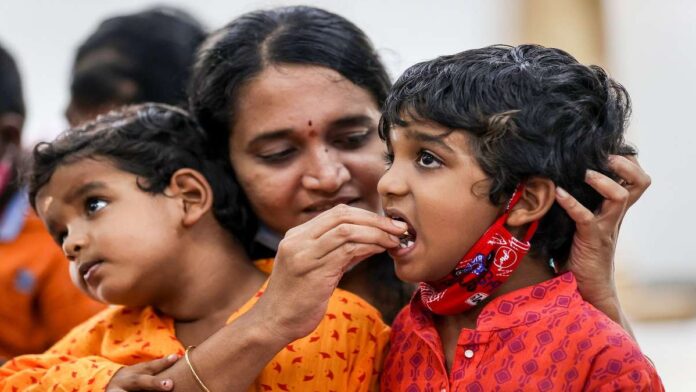After more than 100 instances of Hand Foot and Mouth Disease (HFMD), also known as Tomato Flu, were detected in Kerala, Tamil Nadu, Odisha, and Haryana, the national government issued an alert to states. As per sources of the Ministry of Health and Family Welfare, Tomato flu originated in the Kollam region of Kerala on the 6th of May and was reported on July 26th, more than 82 children aged under 5 are said to be infected by local government hospitals. Several other areas are also impacted in Kerala.
This prevalent viral disease prompted a public health notice in neighboring Tamil Nadu and Karnataka. Furthermore, the Regional Medical Research Center in Bhubaneswar has stated that 26 children aging from 1 to 9 years in Odisha had the condition. Aside from Kerala, Tamil Nadu, Haryana, and Odisha, no other areas in India have reported the virus-caused sickness in their State/UT.
According to an article published last week in the British medical magazine Lancet, the virus takes its name from the eruption of red and painful blisters across the body that progressively swell to the size of a tomato. The blisters mimic those observed in children with monkeypox.
According to the report, the condition, which appears to spread by intimate contact and is not considered life-threatening, might be an aftereffect of chikungunya or dengue rather than a viral infection.
Symptoms of the disease
Symptoms of the disease include fever, skin rash & oral sores. It generally begins with a mild fever, a loss of appetite, fatigue, and a scratchy throat. Small red patches emerge one or two days after the fever begins, followed by blisters and ultimately ulcers. Sores on the tongue, gums, and inside of the cheeks, palms, and soles are the most prominent.
According to sources, tomato flu might be a novel version of the hand, foot, and mouth illness, which is frequent in children under the age of five. It went on to say that the new virus is a self-limiting condition, one that usually resolves on its own without therapy for which no particular medicine is available.
Some argue that because tomato flu is similar to a hand, foot, and mouth illness if the outbreak in children is not managed and avoided, transmission might have catastrophic repercussions by spreading to adults as well.
Effects of the disease on children
Young children appear to be more vulnerable due to the usage of diapers, their tendency to touch filthy surfaces, and their liking to put items into their mouths. Its chief symptoms include high fever, rashes, and severe joint pain, which are comparable to chikungunya. Other symptoms include exhaustion, nausea, vomiting, diarrhea, and flu-like symptoms similar to a dengue illness.
Although the symptoms of tomato flu and covid-19 are similar, the virus that causes the new disease is not connected to the coronavirus, according to the Lancet paper. After testing has ruled out dengue, chikungunya, Zika, chickenpox, and herpes, tomato flu is identified.

















